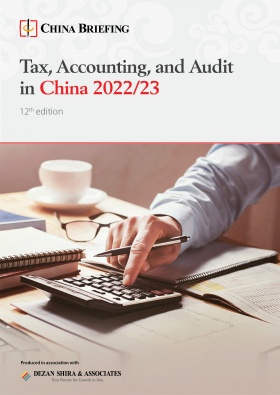China Fully Implements New IPO Rules – Understanding the Registration-Based Mechanism for Public Listings (Updated)
UPDATE: On February 17, 2023, the China Securities Regulatory Commission (CSRC) officially announced the “full implementation” of the registration-based system for initial public offerings (IPOs) to mainland China’s stock exchanges. This means that the registration-based system will now be expanded to the remaining stock exchanges that had until recently used an approval-based system for China’s IPO mechanism, namely, the main boards of the Shanghai and Shenzhen stock exchanges. The announcement also states that all of the relevant rules for the registration-based system came into effect on the date of the announcement (that is, on February 17). These rules refer to the 165 implementation measures and institutional rules that were released on February 1 by a range of regulatory bodies and industry associations, including the CSRC.
According to the announcement, the full implementation of the registration-based system is a major reform to China’s IPO mechanism and marks the finalization of the institutional arrangements for the change. The expansion of the system was a result of its successful pilot implementation on the ChiNext board, the STAR board, and the Beijing Stock Exchange.
On February 1, 2023, China’s top securities regulator, the CSRC, released a raft of registration measures and regulations for the implementation of a registration-based initial public offering (IPO) system for public comment until February 16, 2023. Key among them is the Measures for the Administration of Initial Public Offering Stock Registration (hereinafter the “registration measures”), which outlines the basic requirements for the public listing of companies on the Shanghai Stock Exchange (SSE) and the Shenzhen Stock Exchange (SZSE). These registration measures were officially adopted on February 17, 2023, per an announcement from the CSRC.
This new bundle of measures provides the framework for the reform of China’s IPO system, which until recently has been an approval-based system in which companies are required to obtain authorization from the CSRC in order to go public.
The new system has already been implemented on a small scale in some of the boards of mainland stock exchanges. The Shanghai STAR market, a market under the Shanghai Stock Exchange (SSE) focused on tech stocks, has piloted the registration-based system since its launch in 2019. This was followed by the ChiNext market on the Shenzhen Stock Exchange (SZSE) in 2020, and the SME-focused Beijing Stock Exchange (BSE) in 2021.
A notice published on the CSRC website on February 1 also stated that the Party Central Committee and the State Council had recently approved the Overall Implementation Plan for the Full Implementation of the Stock Issuance Registration System (the “Overall Plan”), which gives the green light to implement the registration-based system to the remainder of mainland China’s stock exchanges; namely, the main boards on the SSE and SZSE, as well as the National Equities Exchange and Quotation (NEEQ, also known as the “New Third Board”), a market for over-the-counter trading of stocks in smaller companies in Beijing.
Along with the registration measures, the SSE and SZSE have also released a series of implementation measures for their respective bourses, providing the specifics on the rules and requirements for public listings. The exchanges are also soliciting feedback on these implementation rules until February 16.
The registration measures mark a major overhaul of China’s IPO mechanism and are expected to facilitate and encourage more companies – in particular large blue-chip companies – to list on mainland stock exchanges.
How is the registration-based system different from the approval-based system?
Prior to this latest reform, companies in China had to receive approval from the CSRC in order to list on a stock exchange in mainland China. Under this system, the CSRC is responsible for receiving and reviewing companies’ IPO applications. It involves a long list of procedures, including pre-filing reviews, document filing with the CSRC, possible inspections and audits by the CSRC, and more. This procedure could take months or even years to complete.
In addition to approving a company’s listing, the CSRC was also responsible for setting the company’s share value.
Under the registration-based system, it will be up to the stock exchanges themselves to determine whether the company meets its stock issuance criteria and information disclosure requirements based on the information the company has submitted in its application. Each board within the different stock exchanges has different requirements and profit thresholds for companies to list, reflecting the characteristics of each market. The registration measures also require China’s three stock exchanges to formulate their own implementation rules for the registration-based system.
Meanwhile, the CSRC will take on a supervisory role, responsible for the final approval of the IPO applications based on the stock exchange’s recommendations. Rather than assessing whether the company meets the stock exchange’s criteria for listing, the CSRC will focus on the company’s compliance with national laws and various industry standards and regulations.
Finally, the CSRC will no longer determine the price of shares, and it will be up to the market to decide on the company’s value.
What are the capital and financial requirements for companies under the registration-based system?
The capital requirements for eligibility to publicly list vary from the different boards, reflecting the type of companies that they are targeting. These differentiated thresholds are also designed to reflect the investment risks involved and help investors to make better investment decisions.
For the main boards of the SSE and SZSE, the eligibility requirements for the total value of shares issued, market capitalization, and financial indicators are in line with the current rules but also bear necessary adjustments, as introduced below.
|
IPO Eligibility Requirements for the SSE and SZSE |
|
| Share requirements |
|
| Market capitalization and financial indicators | Must meet at least one of the following criteria:
|
| Source: Shenzhen Stock Exchange Stock Listing Rules (2023 Revised Draft for Comment); Shanghai Stock Exchange Stock Listing Rules (Draft for Comment). | |
It is worth noting that the above financial and capital thresholds are much higher than the ones currently in place. For instance, to list on the main board of the SSE, a company is currently only required to have net profits of over RMB 30 million (approx. US$4.4 million) in the last three years, rather than RMB 150 million (approx. US$22.1 million) in the new registration measures. Other thresholds, such as the minimum requirements for net cash flows and cumulative operating income in the last three years have also been raised.
However, the new regulations also do away with the current issuance conditions regarding the absence of unrecovered losses and restrictions on the proportion of intangible assets. Currently, to list on the main board of the SSE, for instance, companies are required to record a ratio of intangible assets to net assets at the end of the most recent period of a maximum of 20 percent and have no unrecovered loss at the end of the most recent period.
Other changes to China’s IPO regulations
Another major amendment proposed in the various regulations is the removal of the cap on the fluctuation of shares in the first five days after the IPO. Currently, the SSE and SZSE main boards place a cap on price fluctuations on the first day of training at a maximum gain of 44 percent and minimum fall of 36 percent, and a cap of plus and minus 10 percent from the second day onward. After the implementation of the various registration measures, there will be no limitation on price fluctuation in the first five days on the main boards of the SSE and SZSE.
However, the daily cap on price fluctuation starting from the sixth day after IPO – at plus or minus 10 percent – will remain in place for the two main boards. The daily price fluctuation limit of 20 percent for the Shanghai STAR market and the Shenzhen ChiNext will also remain in place.
In addition, the SSE and SZSE main boards also place a limit on issue pricing of 23 times the price-earnings (PE) ratio. Under the new regulations, this limit will also be removed.
What does the registration-based system mean for companies and investors?
It is hoped that the registration-based system will make it easier for companies to list publicly on stock markets in mainland China. As the registration-based system was already in place for the boards that focus on smaller companies, the expansion of the system will mainly be significant for large blue-chip companies that are eligible to list on the main boards of the SSE and SZSE where they had to go through the approval-based system.
However, it is not certain that the new rules will necessarily lead to a surge in new listings, as the thresholds for financial indicators and market capitalization have risen, meaning fewer companies will be eligible to list on the main boards of the SSE and SZSE.
In terms of the impact on investors, the public disclosure of information that companies are required to do will help to increase the transparency of the operations and revenue of companies, which means investors will have a better understanding of the finances and operations of a company that has listed.
These high requirements for information disclosure continue after the listing, with companies required to divulge a variety of transactions that may impact their business. In addition to the company information, the entire IPO registration system will become more transparent, as the standards, procedures, content, processes, and results of reviews and registrations will be made open to the public.
The disclosure of this range of information will ultimately help investors to make more informed decisions when trading stocks.
On the other hand, the high disclosure requirements, as well as other rules under the registration-based IPO system, reemphasize the importance for companies to have a solid accounting system, a well-designed and effectively implemented internal control system, and a successful compliance management system. Companies who plan to go public in the future are advised to pay attention to these aspects from the very beginning, rather than try to make difficult and lengthy overhauls later in order to catch fleeting market opportunities.
Note: This article was originally published on February 7, 2023, and last updated on February 22, 2023.
About Us
China Briefing is written and produced by Dezan Shira & Associates. The practice assists foreign investors into China and has done so since 1992 through offices in Beijing, Tianjin, Dalian, Qingdao, Shanghai, Hangzhou, Ningbo, Suzhou, Guangzhou, Dongguan, Zhongshan, Shenzhen, and Hong Kong. Please contact the firm for assistance in China at china@dezshira.com.
Dezan Shira & Associates has offices in Vietnam, Indonesia, Singapore, United States, Germany, Italy, India, and Russia, in addition to our trade research facilities along the Belt & Road Initiative. We also have partner firms assisting foreign investors in The Philippines, Malaysia, Thailand, Bangladesh.
- Previous Article Amendments to China’s Trademark Law – Improving IP Use and Protection
- Next Article Is China’s ‘Tech Crackdown’ Over? Our 2023 Regulatory Outlook for the Sector









